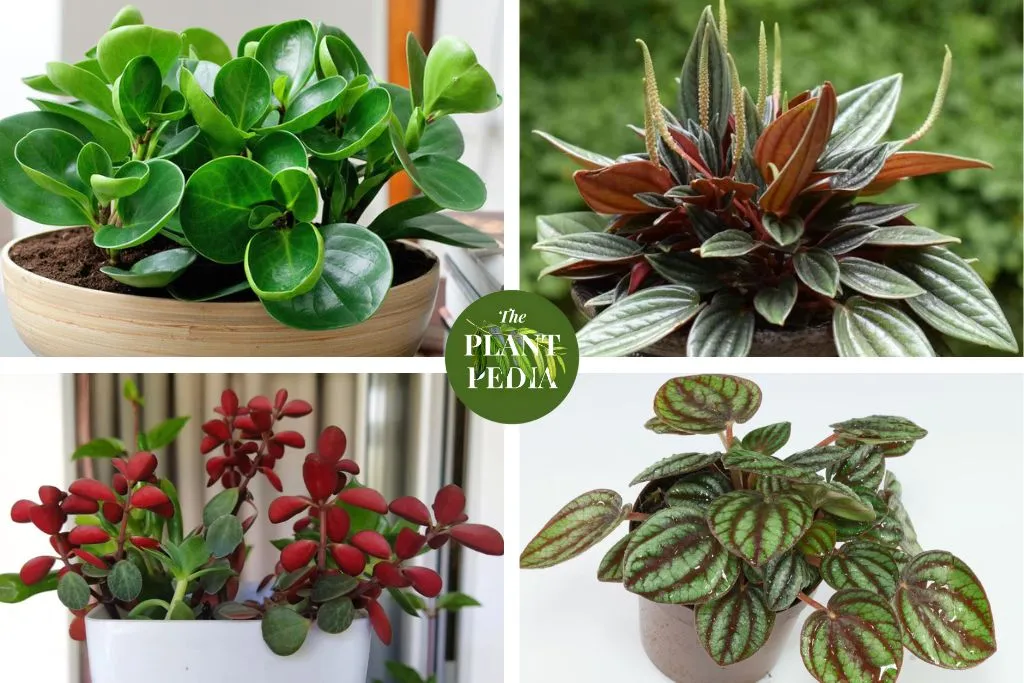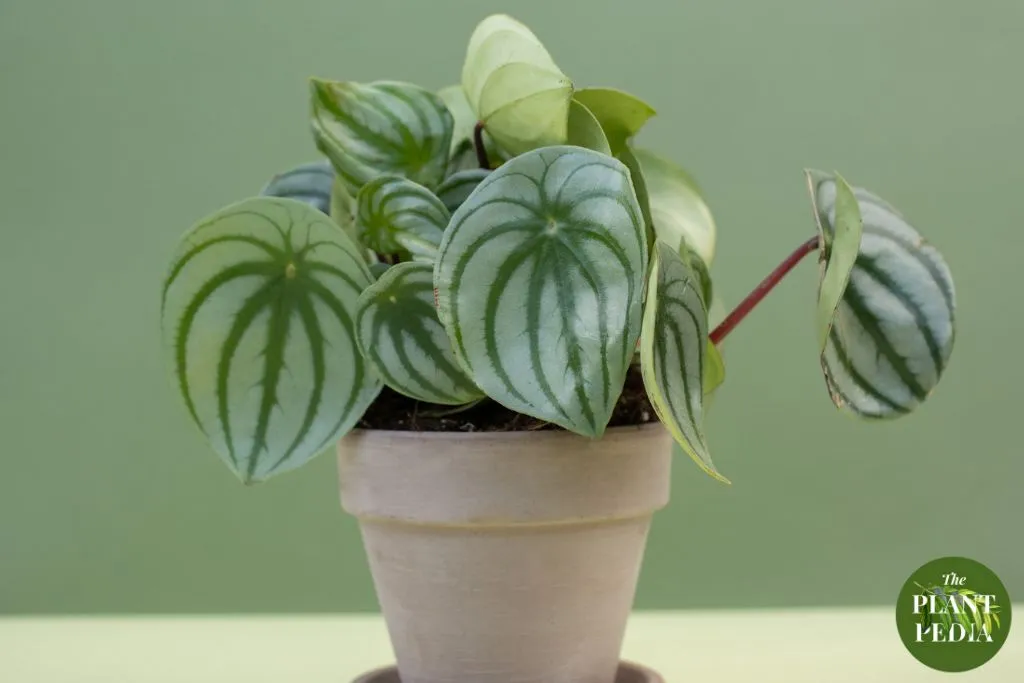Houseplants have a remarkable ability to transform indoor spaces, adding not only beauty but also a sense of tranquility and connection to nature.
Among the myriad choices available to plant enthusiasts, Peperomia plants stand out as an attractive and versatile option.
Their unique foliage, compact size, and ease of care make them a popular choice for both beginners and experienced plant lovers.
In this in-depth guide, we will explore the fascinating world of Peperomia care, delving into its origins, detailed care instructions, propagation methods, and a concluding note on why these plants deserve a place in every indoor garden.
Table of Contents
Unveiling the Diversity of Peperomia
Peperomia, a genus belonging to the Piperaceae family, boasts an astounding variety of over 1,000 recognized species.
Originating from the tropical regions of Central and South America, Peperomias have evolved to thrive in diverse environments, making them well-suited for indoor cultivation.
From the striking Peperomia obtusifolia with its glossy, rounded leaves to the captivating Peperomia argyreia (Watermelon Peperomia) with its distinctive watermelon-like patterned foliage, each species offers a unique aesthetic appeal.

Mastering the Art of Peperomia Care:
Caring for Peperomia varieties shares many common principles, making it easier to provide consistent care for different types of these charming houseplants.
Here are the key care practices that apply to most Peperomia varieties:
1. Light Requirements
Peperomias have distinct preferences when it comes to light. While they thrive in bright, indirect light, they’re sensitive to direct sunlight, which can scorch their leaves.
A north-facing window or a spot a few feet away from east- or west-facing windows is ideal.
If natural light is limited, supplement with full-spectrum LED grow lights, ensuring your Peperomias receive the right light intensity to flourish.
2. Temperature and Humidity
Maintaining the right temperature and humidity levels is crucial for Peperomia care. These plants prefer average room temperatures ranging from 65°F to 75°F (18°C to 24°C).
Protect them from sudden temperature drops and drafts, especially during winter. While they are adaptable to moderate humidity, a humidity level of around 40% to 50% replicates their native environment.
Employing humidity trays or room humidifiers can help achieve optimal conditions.
3. Watering Wisely
Watering is a balancing act that requires keen observation. Allow the top inch (2.5 cm) of the soil to dry out before watering, preventing both overwatering and underwatering.
Peperomias are sensitive to waterlogged soil, which can lead to root rot. When watering, ensure thorough saturation, allowing excess water to drain from the bottom.
Use a well-draining potting mix and pots with drainage holes to facilitate proper moisture control.
4. Potting Mix and Repotting
Choosing the right potting mix and repotting at appropriate intervals contribute to Peperomias’ well-being.
A blend of peat moss, perlite, and orchid bark or coconut coir promotes good drainage while retaining essential moisture.
Repot every 2 to 3 years during the spring, selecting a slightly larger pot to accommodate growth. Peperomias prefer being slightly root-bound, so avoid pots that are excessively large.
5. Soil and Fertilization
Peperomias thrive in well-draining soil that allows excess water to flow through easily.
As mentioned earlier, a mixture of peat moss, perlite, and orchid bark or coconut coir creates an optimal environment for their root systems.
This type of soil structure prevents water from becoming stagnant around the roots, reducing the risk of root rot.
Fertilization plays a vital role in the overall health and growth of your Peperomias. During their active growing season in spring and summer, feed them with a balanced, diluted liquid fertilizer every 4 to 6 weeks.
Be cautious not to over-fertilize, as this can lead to nutrient imbalances and potential damage to the plant.
In the dormant months of fall and winter, you can reduce or suspend fertilization since the plants’ growth slows down.
Read: Peperomia Soil – A to Z Soil Knowledge.
6. Pruning and Maintenance
Pruning is an essential aspect of Peperomia care, helping to maintain the plant’s shape, encourage new growth, and remove any dead or yellowing leaves.
Regularly inspect your Peperomias and trim away any damaged or unattractive foliage using clean, sterilized pruning tools.
If your Peperomia becomes leggy or overly tall, you can consider pruning back the stems to promote bushier growth.
Maintenance also includes periodically checking your plants for pests or signs of diseases.
While Peperomias are relatively resilient, they can still fall victim to common indoor plant pests such as mealybugs, aphids, and spider mites.
If you notice any unusual changes in your plant’s appearance, such as distorted leaves, webbing, or discoloration, take prompt action to address the issue.
Isolate the affected plant, treat it with appropriate insecticidal solutions, and monitor its recovery closely.
7. Propagation and Expansion
Peperomias offer an exciting opportunity for plant enthusiasts to expand their collection through propagation. Leaf cuttings and stem cuttings are the primary methods for reproducing Peperomias.
Experimenting with propagation can be both rewarding and educational, allowing you to witness the growth process from a tiny cutting to a thriving plant.
Remember that each cutting has the potential to develop its own unique traits, creating a diverse array of Peperomia plants in your indoor garden.
This experimentation can also deepen your understanding of plant biology and contribute to your overall gardening knowledge.
8. Observing and Adapting
Pay close attention to your Peperomias’ appearance and behavior. If you notice any changes in leaf color, drooping, or other unusual signs, investigate the cause and adjust your care routine accordingly.
Remember that individual varieties might have slight variations in preferences, so being attuned to your plants’ needs is key to their thriving.
By following these common care practices, you can provide a nurturing environment for a variety of Peperomia species, each with its unique traits and beauty.
As you embark on this journey of caring for these houseplants, you’ll not only enjoy their aesthetic appeal but also gain valuable insights into the art of plant cultivation.
Propagation: Growing Your Peperomia Family
Peperomias offer various propagation methods to expand your collection and share these delightful plants with fellow enthusiasts.
You already know that there are two primary propagation techniques, here are their details:
1. Leaf Cuttings
Leaf cuttings involve carefully snipping a healthy leaf from the parent plant, allowing the cut end to callus, and then placing it in a well-draining substrate.
Keep the substrate consistently moist and provide indirect light. Over time, tiny plantlets will emerge from the leaf, and once they have developed roots and leaves of their own, they can be transplanted into individual pots.
2. Stem Cuttings
Stem cuttings involve snipping a portion of a healthy stem, ideally with a few leaves attached. Allow the cut end to callus, then plant it in a suitable rooting medium.
Maintain high humidity and consistent moisture until the cutting establishes roots. Once rooted, you can gradually acclimate the new plant to the standard care routine.

Peperomia Care FAQs:
Peperomias have captured the hearts of indoor plant enthusiasts with their unique charm and relatively straightforward care requirements.
However, as with any plant, questions may arise along the journey of nurturing your Peperomia.
To provide you with a comprehensive guide to successful Peperomia care, we’ve compiled a list of frequently asked questions and their detailed answers.
How often should I water my Peperomia?
The frequency of watering your Peperomia depends on factors such as the type of potting mix, the size of the pot, humidity levels, and environmental conditions.
In general, allow the top inch (2.5 cm) of the soil to dry out before watering. Stick your finger into the soil – if it feels dry, it’s time to water.
Overwatering can lead to root rot, so it’s better to err on the side of underwatering.
Can I place my Peperomia in direct sunlight?
Peperomias prefer bright, indirect light. Direct sunlight can scorch their leaves, leading to damage.
A north-facing window or a spot a few feet away from east- or west-facing windows is ideal.
If natural light is limited, consider using artificial grow lights, ensuring they are positioned at an appropriate distance to prevent light burn.
What should I do if my Peperomia’s leaves are drooping?
Drooping leaves can be a sign of various issues, including overwatering, underwatering, or temperature stress.
Check the moisture level of the soil and adjust your watering routine accordingly.
Ensure your Peperomia is not exposed to sudden temperature fluctuations or drafts, as these factors can also cause drooping leaves. Providing stable conditions and proper care should help the plant recover.
How do I propagate my Peperomia?
Peperomias can be propagated through both leaf cuttings and stem cuttings.
For leaf cuttings, select a healthy leaf, let it callus for a day or two, then place it in a well-draining substrate and keep it consistently moist.
Plantlets will eventually emerge from the leaf. Stem cuttings involve snipping a portion of a healthy stem with leaves attached, allowing it to callus, and then planting it in a rooting medium.
Maintain high humidity until the cutting establishes roots.
Read: Peperomia Propagation in Water: Step-by-Step Guidelines.
What type of potting mix should I use for my Peperomia?
A well-draining potting mix is essential for Peperomia care. You can create a mix by combining peat moss, perlite, and orchid bark or coconut coir.
This blend provides adequate drainage while retaining some moisture, striking the right balance for your Peperomia’s root health.
Are Peperomias prone to pests?
While Peperomias are relatively pest-resistant, they can still fall victim to common indoor plant pests such as mealybugs, spider mites, and aphids.
Regularly inspect your plants for any signs of infestation, including discolored leaves, webs, or tiny insects.
If pests are detected, isolate the affected plant, and treat it with insecticidal soap or neem oil, following the manufacturer’s instructions.
Can I fertilize my Peperomia, and if so, how often?
Fertilizing your Peperomia can promote healthy growth, but moderation is key.
During the growing season (spring through summer), feed your Peperomia with a balanced, diluted liquid fertilizer every 4 to 6 weeks.
In the dormant season (fall and winter), reduce or suspend fertilization, as the plant’s growth slows down.
Should I prune my Peperomia?
Pruning can help maintain the shape and vitality of your Peperomia. Regularly remove any dead or yellowing leaves to encourage new growth.
If your plant becomes leggy, you can prune back the stems to encourage bushier growth. Be sure to use clean, sterilized pruning tools to prevent the spread of diseases.
Can I keep different varieties of Peperomia together?
Keeping different Peperomia varieties together is generally fine, as long as their care requirements are similar.
However, be mindful of their individual light, water, and humidity preferences. Grouping plants with similar needs can make it easier to provide them with the appropriate care.
Why are the leaves of my Peperomia turning yellow?
Yellowing leaves can indicate several issues, such as overwatering, underwatering, poor drainage, or nutrient deficiencies.
Assess your watering routine, ensure proper drainage, and consider feeding the plant with a balanced fertilizer. If the problem persists, check for signs of pests or diseases.
Can I place my Peperomia outdoors during the summer?
While Peperomias are typically grown indoors, some varieties can be placed outdoors in a shaded or partially shaded area during the summer months.
However, they should be gradually acclimated to outdoor conditions to prevent shock. Monitor them closely for changes in their growth and appearance.
Are Peperomias toxic to pets?
Peperomias are considered non-toxic to cats, dogs, and humans. However, it’s always a good practice to keep any plant out of reach of curious pets to prevent accidental ingestion.
Read details: Is Peperomia Toxic to Dogs?
Peperomia care can be an enjoyable and rewarding experience. By understanding their needs, addressing challenges promptly, and providing a nurturing environment, you can watch your Peperomias flourish and thrive, adding beauty and life to your indoor spaces.
Conclusion
Mastering the art of Peperomia care is a journey of discovery, growth, and appreciation for nature’s wonders.
From understanding their light preferences to navigating the intricacies of watering and providing proper nutrition, every step you take contributes to the well-being of these charming houseplants.
Peperomias reward your efforts with their captivating foliage, resilience, and the sense of fulfillment that comes with nurturing a living organism.
As you apply the knowledge and techniques shared in this guide, you’ll find that your Peperomias not only thrive but also become companions in your indoor sanctuary.
So, embrace the challenge, celebrate the successes, and learn from the setbacks. As you become attuned to the unique needs of your Peperomias, you’ll witness their growth, evolution, and the remarkable beauty they bring to your living space.
Happy Peperomia care and happy planting!

